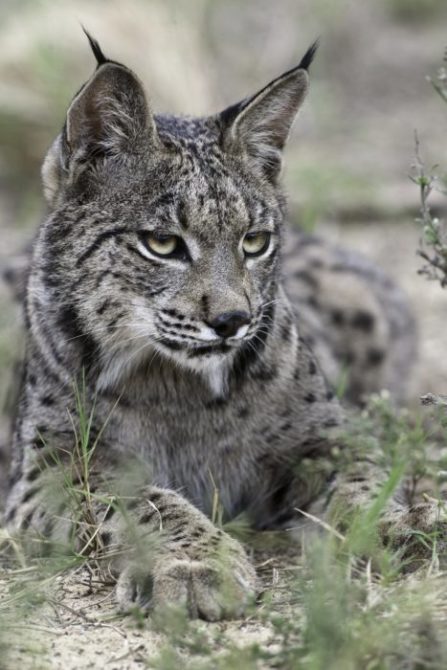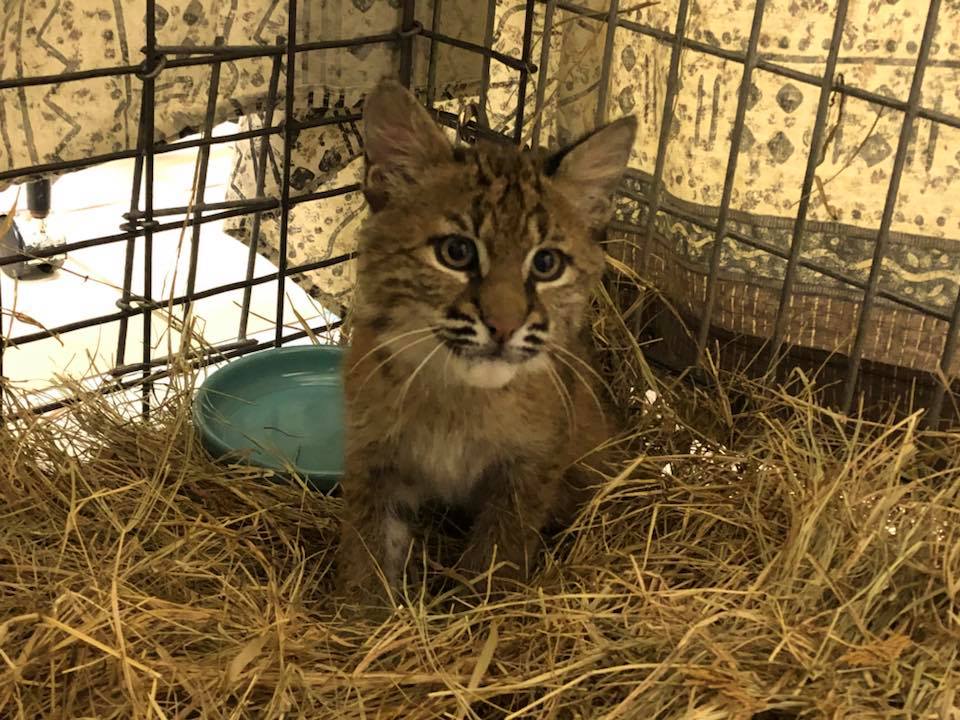Tiger Lake
What’s up with Tiger Lake?
If you are as startled as we were at the change in the appearance of Tiger Lake here’s the scoop. It looks gross and we are dealing with it in a way that is safe for the cats and the environment.
The dark green you are seeing is hydrilla, an invasive weed, that has been growing under the surface for years undetected, because the lake is 30 feet deep in places and the roots started at the bottom. That’s why you see more of it around the edges, where the water is more shallow. It’s been growing for 30 years, but wasn’t obvious until it broke through the surface. As soon as we saw it we began researching the weed and how to kill it and using only environmentally safe products, that cost about $600 dollars each week. Help save Tiger Lake! Those granules are having some effect, and now you see brown patches where the hydrilla is dying.
The bright green you see is the algae explosion because it feeds on the dying hydrilla. That means even more eco friendly compounds are having to be spread over the surface to safely kill off the algae. The good news is that our tiger’s pools have never been so crystal clear thanks to all of these treatments of the lake.
These aerial videos show a big difference in just six months, but again, you have to remember that these plants have been likely growing for the past 30 years to reach the surface where we can see them. The weeds are so thick we can no longer even take a motorized boat out to spread the hydrilla and algae killers so we are trying our bucket truck, kayaks and are even considering crazy options like drones.
There is a type of fish, called a Grass Carp, that can be used to control such infestations, but they eat everything in sight and can grow to 75 pounds. The Grass Carp are an invasive species as well, so the only way to utilize them is through a permit from the state of Florida and you can only buy from specific dealers who sterilize the fish before they can be released. We are on the waiting list but it’s a 90 day waiting list from the date of us jumping through all the other hoops the state required. That day should be mid September when we should finally be able to purchase the 85 fish they have allotted to us based on the size of our lake.
Experts we have consulted suggested the chemicals we are using, the techniques, timing, and also suggested aerating the lake with fountains. That’s why we have a new fountain near Simba Tiger. The lake could reach a crisis stage for the fish and waterfowl, so we are prioritizing these efforts. This lake is too beautiful to let it succumb to this noxious, invasive plant.
Aerial of Tiger Lake June 30, 2021
Aerial of Tiger Lake November 20, 2020
The History of Tiger Lake
The previous owner dug out 18 acres and hit a spring. Carole foreclosed on that owner when she saw what he had done and due to his failure to make the payments on the mortgage. Back then, it had just recently been excavated so there was almost no plant growth on the bottom of the lake in the early 90s. The area we call the land bridge, that separates the two lakes, is where the previous owner would drive a dredge out to dig on either side. At some altitudes and in certain lighting, you can see several of these sand bars just below the surface of the lake that served the same purpose.
Because it was spring fed the lake was crystal clear and we used to swim and snorkel in it all the time. Before long fish began to populate the lake as well as plants and all was good for decades…or so we thought.[/vc_column_text][/vc_column][/vc_row]
September 30, 2021 Update
We are spending tens of thousands of dollars to save Tiger Lake. Invasive species including hydrilla and cattails have taken over. We fought our best fight but now are having to hire the big guns and will be purchasing 200 grass carp with our new FWC permit. This will enable Tiger Lake explore webcams to see Jasmine and Kali too.
February 2, 2022 Update
We were approved by the FWC for 200 grass carp. The first 100 came at the end of last year and the second 100 arrived today. Thank you everyone who is helping us heal Tiger Lake from its hydrilla infestation. The carp were happily eating it immediately upon arrival.
May 16, 2022 Update
May 17, 2022 Update
Victor welded a giant rake to try and dredge some of the hydrilla out of the small lake using the bobcat. We literally raked in approximately 500 pounds with each pass.



https://youtu.be/I80tfIXAAH8
May 28, 2022 Update
There are tiny plants in Tiger Lake on the surface that are not hydrilla. They float on the top and do not affect the tigers swimming. The ducks like to eat it but for obvious reasons the ducks do not want to come on the tiger side of the lake to eat it!






